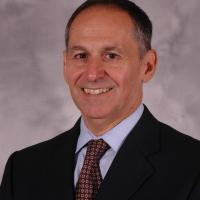EULAR 2016: Name that Country - Part I Save
When I was just a lad in the 1950s, I used to enjoy a television quiz show called “Name that Tune.” This popular show, which was hosted by an amiable singer and comedian named George DeWitt, had a premise that was simple but appealing. The studio orchestra would start playing the notes of a song and the two contestants would compete to see who could identify the song first, running across the stage “to ring a bell and name that tune.”
The game endures to the present and I recently observed a version as part of the evening entertainment at a beach resort in the Caribbean. A warm wind blew from the ocean as I savored a rum punch that was ruby red in color. Suffice it to say, I did not know the name of one song. In my defense, the songs were all popular. I listen to NPR not G105. Who knew Adele sang “Someone Like You?” Who knew that Adele is a singer?
For years, when attending the EULAR Congress, I have pursued a similar pastime which I call “Name that Country.” In my innocuous little game-challenging my talents, however meager, as an anthropologist and ethnographer- I try to guess the country of origin of an attendee on the basis of his or her appearance. The world has changed and people from all over Europe are increasingly attending the EULAR Congress, including many from countries in Eastern Europe.
Like many people in the West, I have had little or no contact with anyone from countries which have emerged from the dark shroud of the Soviet era. When I grew up, countries like Slovenia or Bosnia did not exist as independent nations. All I know about their citizens are stereotypes and, depending on the country, images of Olympians, often gymnasts or weight lifters.
Pretending to be a great detective like Sherlock Holmes, I would look for clues for the national origin of an attendee who caught my eye: cut and color of the hair, choreography of the hands when talking, physiognomy and stature. These are the usual descriptors any novelist (or essayist for RheumNow) would use to define a character. In an instant, I would compile a quick dossier. “He was of medium height, hair thinning, gray around the temples. A pair of reading glass was propped precariously on this forehead. He looked lost in thought. He was wearing a blue blazer with a blue stripped shirt, baggy khaki pants, and a silk tie of alternating red and blue stripes.”
That one should be easy. That’s me, American through and through. The blue blazer and khakis-the workday uniform of American academia-are the giveaway. At night, the pants are gray but the impression is the same.
In my game, played in the corridors of the convention centers in Nice, Barcelona or Berlin, I would allow myself only a few seconds to make a deduction and then I would find out if I was right by sneaking a quick look at the name tag, trying not to stare and embarrass myself as some kind of weirdo.
When I first started to go to EULAR, my batting average was pretty good and often I could at least figure out the part of Europe from where the person haled. After all, Italians and Swedes often do look different. Even when I was wrong, I enjoyed learning what people from Azerbaijan, Estonia, or Turkey looked like.
Alas, playing the game has been getting more and more difficult. EULAR has grown enormously in size and attendees come from all over the world and not just Europe. With globalization, multi-culturism and the policies of the EU, a massive migration of people has also occurred. Borders are open and, despite some recent changes, people from all over Europe have immigrated to other countries in search of a better life.
The migration has been extraordinary and, in a city like London, it is as likely that the accent you hear is from Poland and not Yorkshire. Europe is not blended smooth, however, and, in the simmering stew of the various countries, pieces and chunks of religion, race and ethnicity are quite distinct and separate ingredients. The pieces may add flavor and texture although sadly, in some places, the stew is hot and beginning to boil.
Looking at the attendees of recent EULAR Congresses, while I can easily tell if someone (or at least his or her ancestors) came from Asia, it would be impossible to know whether they worked in Toronto, Leeds or Copenhagen. Furthermore, an international style of dress has evolved. The major brands are everywhere and good luck trying to divine where the young man in a Nike tee shirt or North Face jacket resides. A few exceptions pertain. A man with a gauzy blue scarf around his neck in June is not likely from the United States. France is not a bad bet.
The venues where EULAR is held also have a striking similarity and are now more or less the same in design and feel. The venues are mostly very new structures and have the most modern electronic doodads and wizardry which get slicker each year. All sessions are in English. In comparison to days gone by, the exhibit halls where the pharmaceutical companies have huge displays are now quite sedate. The products are the same as those shown in the United States at the American College of Rheumatology meeting although the brand names may be different.
Small crowded venues are things of the past and you will no longer find a venue like the one that housed the EULAR Congress in Lisbon in 2003. As noted in an article in Arthritis Research & Therapy by Professor Frank Wolheim, “A heat wave and a somewhat substandard venue hampered some of the activities, notably the poster sessions.” That certainly was the case. During one memorable poster session in 2003, the temperature soared to over a hundred degrees, the humidity was oppressive and people passed out. The environment was not unlike the inside of the CO2 incubator in my lab: a fine place to grow cells but a terrible place to peer at data. Now the venues are blissfully air conditioned and the air in the spacious halls is clean and fresh and feels like it was imported from the far reaches of Iceland (except when there is a volcano).
With the homogenization of the world and a growing uniformity of modern medicine, my “Name that Country” game is approaching its end. As a different kind of amusement, I tried to develop a substitute called “Name that Biologic.” The idea was to guess the product by looking at the results of the ACR 20/50/70, the change in the DAS 28 and the results of the Sharp score. That too is impossible. The results of just about all products look the same. The days when methotrexate stood out from the other small molecule DMARDs seem like ancient history.
So, with the prospects for interesting games dwindling, I minimized my time in idle pursuits and diligently went to sessions at this year’s EULAR Congress which was held in London, June 8-11, 2016. (I am sure that you were wondering whether I would ever get to discuss something substantive. The time is now.) Actually, at the London EULAR Congress this year, I heard a great deal that was new and exciting.
In tomorrows' installment, I will describe what I learned.










If you are a health practitioner, you may Login/Register to comment.
Due to the nature of these comment forums, only health practitioners are allowed to comment at this time.